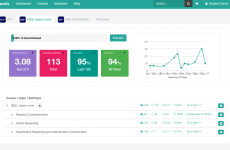On October 17th, twenty-three school districts participating in the Texas High Performance Schools Consortium met to discuss alternatives to existing evaluation systems which consortium-members claim are too dependent on results from the State of Texas Assessments of Academic Readiness (STAAR) test. The STAAR test is an annual assessment for Texas public-school students in grades 3-8 that measures students’ performance in reading, mathematics, writing, science, and social studies while gauging districts’ accountability in meeting state-established curriculum benchmarks. Dawson Orr, superindent of the Highland Park ISD and a member of the consortium, rebuked the existing evaluation system for its “focus on shame and blame…to drive school improvement” and proposed a more comprehensive, holistic system that captures the complexities and nuances of the education spectrum. Namely, Orr and the consortium wish to launch a voluntary system to be conducted in tandem with existing state-level evaluations and to include data from national tests, student and educator portfolios, and other informational sources that districts already regularly compile. Ultimately, their envisioned system would seek less to compare findings across districts and more to provide parents a heightened sense of how their own district is educating their children.
However, not everybody shares their vision. For one, some educators (and, curiously enough, business leaders) fear that national tests would provide too hazy an indicator of districts’ performance since they aren’t set to measure state-level benchmarks and, in the opinion of several, can be easily toggled to inflate (or deflate) results. Moreover, at the end of the 83rd Texas Legislature, Governor Rick Perry, proclaiming that he “will not compromise academic rigor or student outcomes,” vetoed a bill state legislators unanimously passed that would have provided the consortium wavers from various STAAR subject tests and state ratings. At present, then, the consortium – which the state established to foster “innovative, next-generation learning standards” – is faced with the dual challenge of, on the one hand, continuing to implement what it views as an inherently flawed “one-day high-stakes” STAAR evaluation and, on the other hand, creating and generating interest in a parallel alternative which, de facto, would have no legal binding power.


























